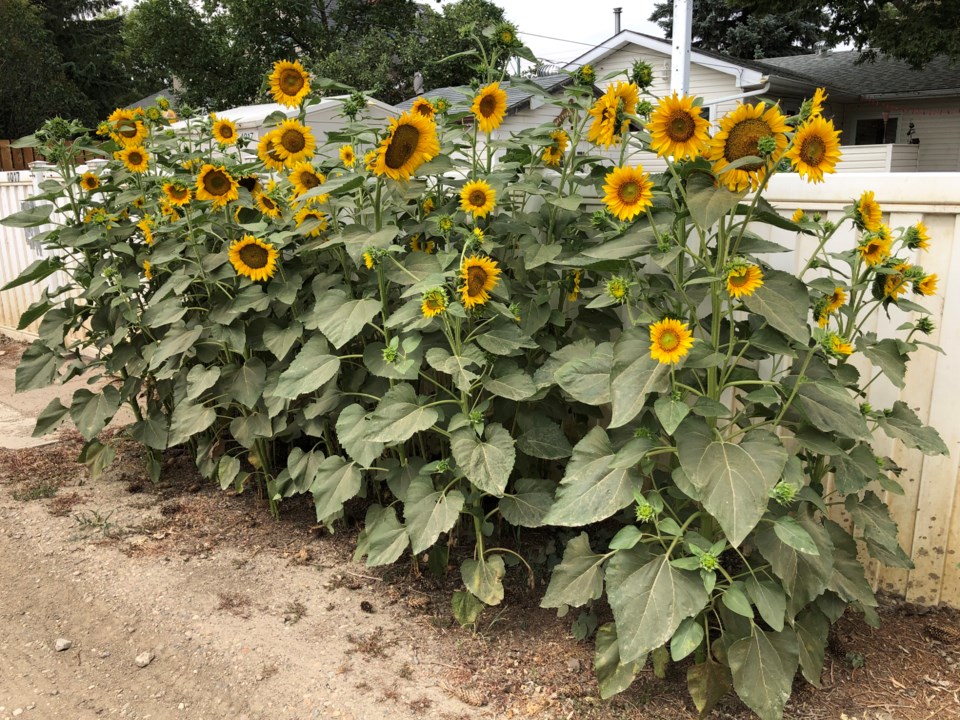A patch of yellow sunflowers is growing in an alley near 10th Avenue Northwest, an unexpected occurrence resulting from a homeowner tossing old seeds over her fence.
Marg MacDonald lives near Montgomery Street and has a bird feeder in her front yard filled with sunflower seeds. This spring, she and two neighbour kids cleaned up the yard to prepare it for the summer. Instead of throwing out the seeds and shells, she tossed them over the fence into the alley to prevent weeds from growing.
Similar to the story of Jack and the Beanstalk, the seeds sprouted over time and a patch of yellow and black sunflowers now occupy a space just over MacDonald’s fence.
“It’s just crazy. I never dreamed they would bloom,” she laughed recently while watering the plants in her front yard. “I was shocked … . I thought they were all empty shells.”
Growing plants is a regular hobby for MacDonald, whose front yard is filled with green, pink, purple, and blue flowers. Keeping sunflowers is also something the local horticulturalist does, but instead of the smaller plants, she grows the giant Russian sunflowers with yellow faces that can measure one foot across.
“I used to grow them in the alley, but everybody stole the heads from them,” she said. “So now I grow them in the yard.”
While birds can make a mess of the feeder, MacDonald has no plans to get rid of the container since she is also an avid birdwatcher — an ornithologist, if you will. She and her husband enjoy watching the creatures flitter around the front yard and in front of the window.
Some of the notable critters include finches, sparrows, woodpeckers, wrens and chickadees. Another creature that comes around — and makes a mess — are squirrels.
“They’re such a nuisance,” MacDonald said, before returning to water the rest of her plants.
It’s likely appropriate that MacDonald’s patch of sunflowers is growing this year because the United States National Garden Bureau has designated 2021 as the Year of the Sunflower.
According to Almanac.com, the sunflower (Helianthus annuus) is an annual plant with a large daisy-like flower face. Its scientific name comes from the Greek words helios (“sun”) and anthos (“flower”).
The flowers come in many colours — yellow, red, orange, maroon, brown — but are commonly bright yellow with brown centres.
Sunflowers are heliotropic, which means they turn their flowers to follow the sun’s movement across the sky east to west and then return at night to face the east, ready again for the morning sun.
As for those sunflowers in the alley, just don’t tell the birds or squirrels about them — the seeds usually make for tasty animal food.




